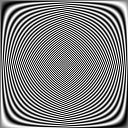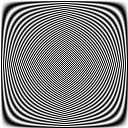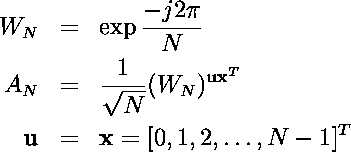Examples
Visualization of the Dft matrix
>>> import Numeric
>>> A = iadftmatrix(128)
>>> iashow(A.imag)
(128, 128) Min= -0.0883883476483 Max= 0.0883883476483 Mean=-0.000 Std=0.06
>>> iashow(A.real)
(128, 128) Min= -0.0883883476483 Max= 0.0883883476483 Mean=0.001 Std=0.06
 |
 |
|
| A.imag | A.real |
Dft matrix is a unitary matrix
>>> import Numeric
>>> import LinearAlgebra
>>> A = iadftmatrix(4)
>>> print Numeric.array2string(A, precision=4, suppress_small=1)
[[ 0.5+0.j 0.5+0.j 0.5+0.j 0.5+0.j ] [ 0.5+0.j 0. -0.5j -0.5-0.j -0. +0.5j] [ 0.5+0.j -0.5-0.j 0.5+0.j -0.5-0.j ] [ 0.5+0.j -0. +0.5j -0.5-0.j 0. -0.5j]]
>>> print Numeric.array2string(A-Numeric.transpose(A), precision=4, suppress_small=1)
[[ 0.+0.j 0.+0.j 0.+0.j 0.+0.j] [ 0.+0.j 0.+0.j 0.+0.j 0.+0.j] [ 0.+0.j 0.+0.j 0.+0.j 0.+0.j] [ 0.+0.j 0.+0.j 0.+0.j 0.+0.j]]
>>> print abs(LinearAlgebra.inverse(A)-Numeric.conjugate(A)) < 10E-15
[[1 1 1 1] [1 1 1 1] [1 1 1 1] [1 1 1 1]]

